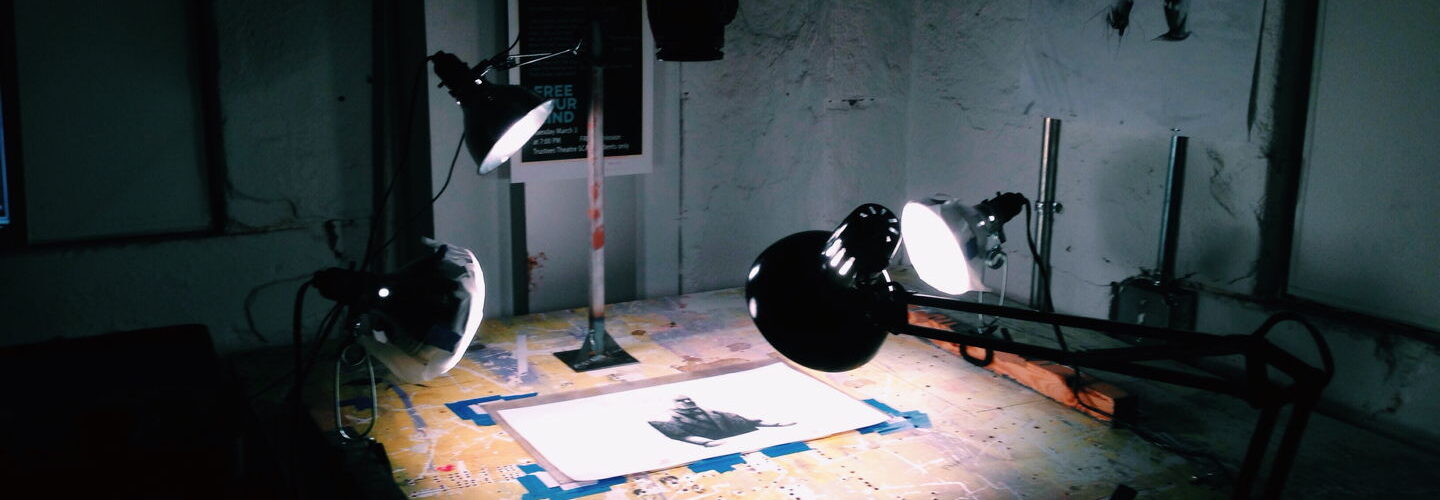
From time immemorial younger generations have looked upon their elders as cautionary tales of domesticated mundanity, whilst older generations have viewed the squandered potential of youth through the disappointed perspective of bitter experience and wasted opportunities. When young and old come together in an isolated gas station in Jonah Primiano’s Savannah College of Art and Design graduation short IDLE, we discover that each is more bound to the other than they may have believed by a shared plague of existential doubts. Primiano tells DN how the daunting encroachment of adulthood inspired his subtle metaphysical tale of late night ennui.
Differences between generations often leans towards fractious stories of conflict, which is the polar opposite of the approach you take in IDLE. What inspired the story and your subtle, observational delivery?
The theme of the film is something that, as a young person, was and is on my mind quite often. Knowing what to pursue with one’s life is very daunting and as I get older and further into adulthood I continue to realize that many people never really ‘figure it out’. I think the observational quality came naturally because during my time at school I felt like I was just an observer to my friends and family back home. It seemed as though each time I went home friends of mine would be more and more lost with their direction and losing ambition. While I was happily enjoying breaks from school, my friends were slowly unwinding in the mundanity of it. The subtle quality of the film grew from this. I wasn’t trying to tell anyone how to be or what to do. My interest was more in reflecting the realities of those around me in an interesting way.
Your website mentions that your interest lies in working with more experimental and non-traditional animation techniques. What then led you to take a narrative and traditional approach with this film?
When it came to making my own film I struggled for a while with this idea that my work had to be ‘experimental’ or ‘different’. I was focusing all of my energy on this. Once I stopped worrying about superficial qualities I was able to be honest with myself and realize that the best film I could make was one that comes from deep within me. When I started to look in, it was IDLE that came out. Even though it felt the opposite of what I had always expected my senior film to be, I decided to trust my intuition and go with it.
When I started to look in, it was IDLE that came out.
The monotone, shifting style allows items to fade into view, build into shots and then combine with one another to form these bleak scenes of ennui. Where did you draw inspiration from for the spacial interplay and look of IDLE?
I drew inspiration from various areas for the film. I have always been moved by vast wide-open landscapes. I was drawn to artists like Casper David Fredrich, Kazimir Malevich, and Mark Rothko. Additionally, I was really inspired by the style, use of space and wide shots in films like There Will Be Blood, No Country For Old Men, and Drive. The overall look of IDLE came very naturally. The setting was a product of driving between my school and home many times throughout the last four years. I would often drive through the night and be surrounded by darkness with little dots of light every few miles coming from the gas stations. Additionally, I have always enjoyed working with charcoal because of the looseness and texture. I think working with such a loose medium allows for very fluid transitions, which I tried to use throughout the film. I did find a couple of films done in charcoal; one of them was SUMO by Laurene Braibant, which was certainly an inspiration.
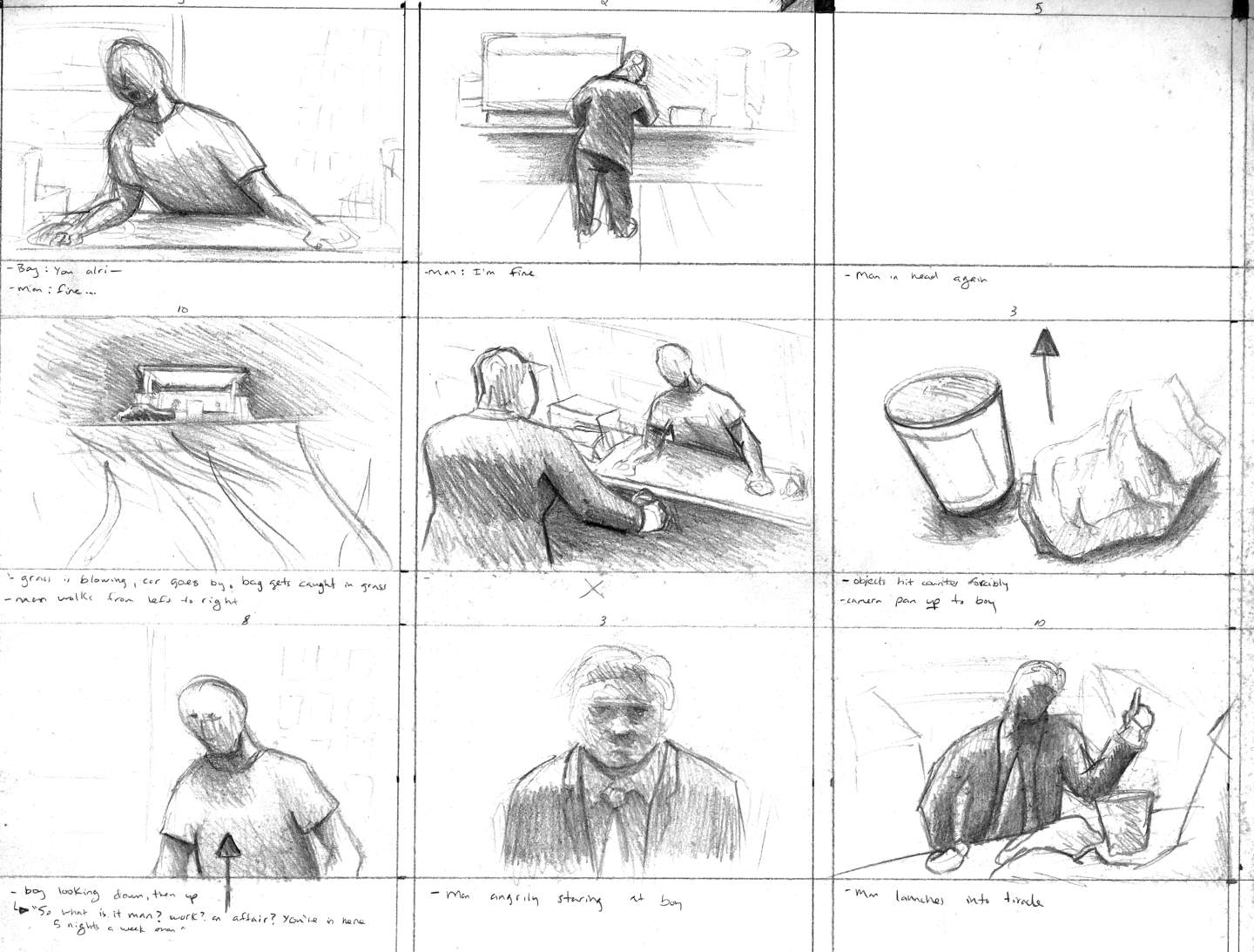

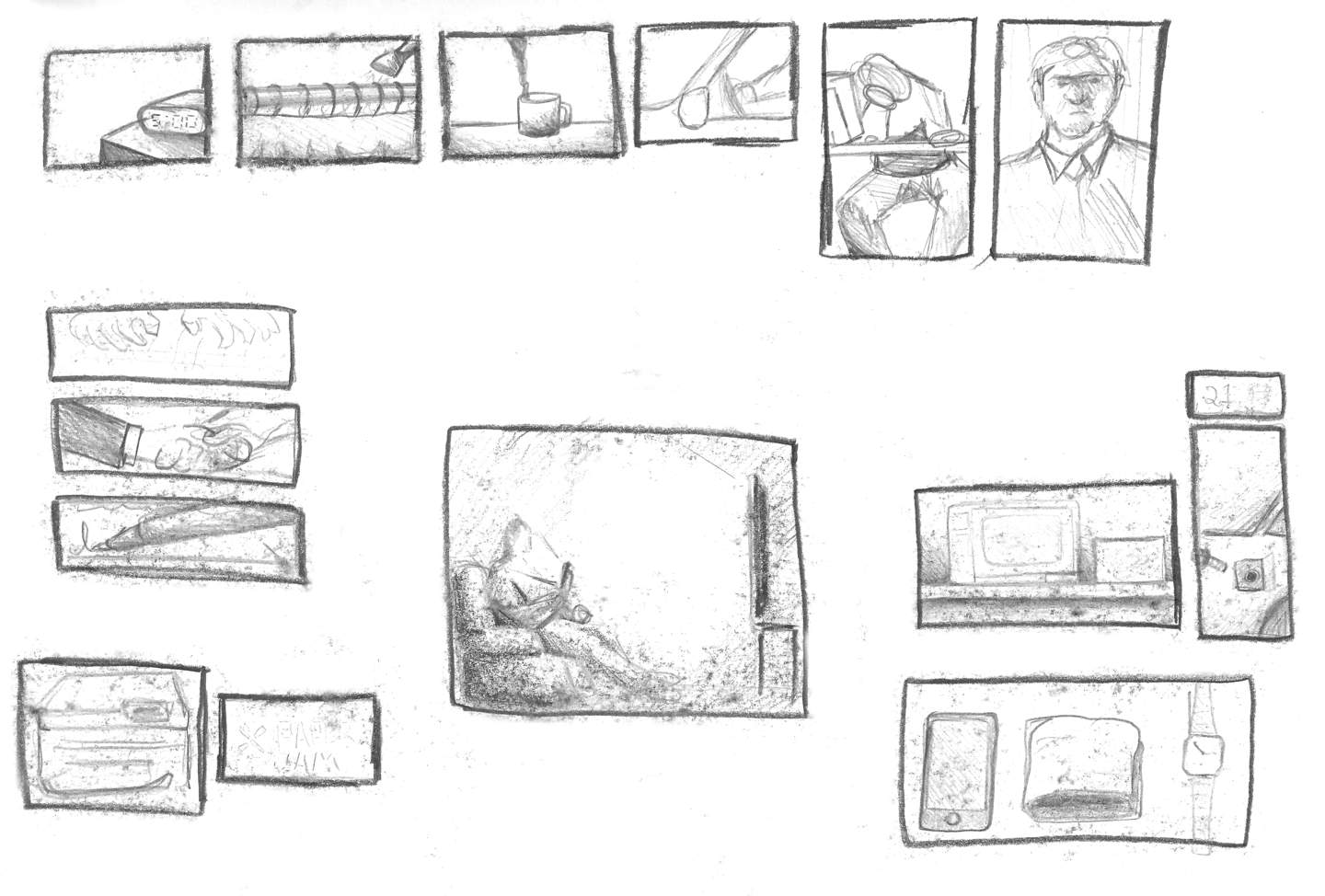
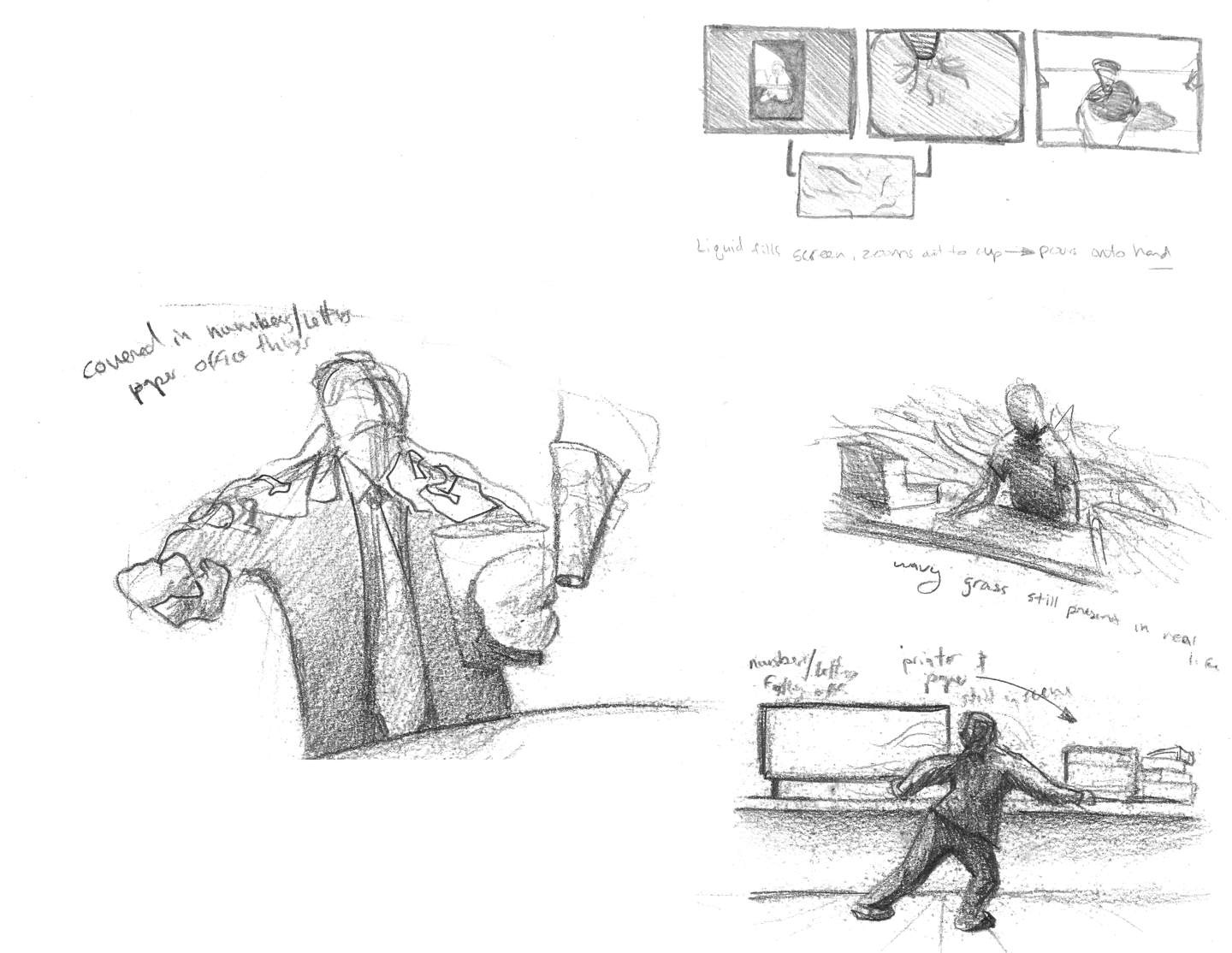
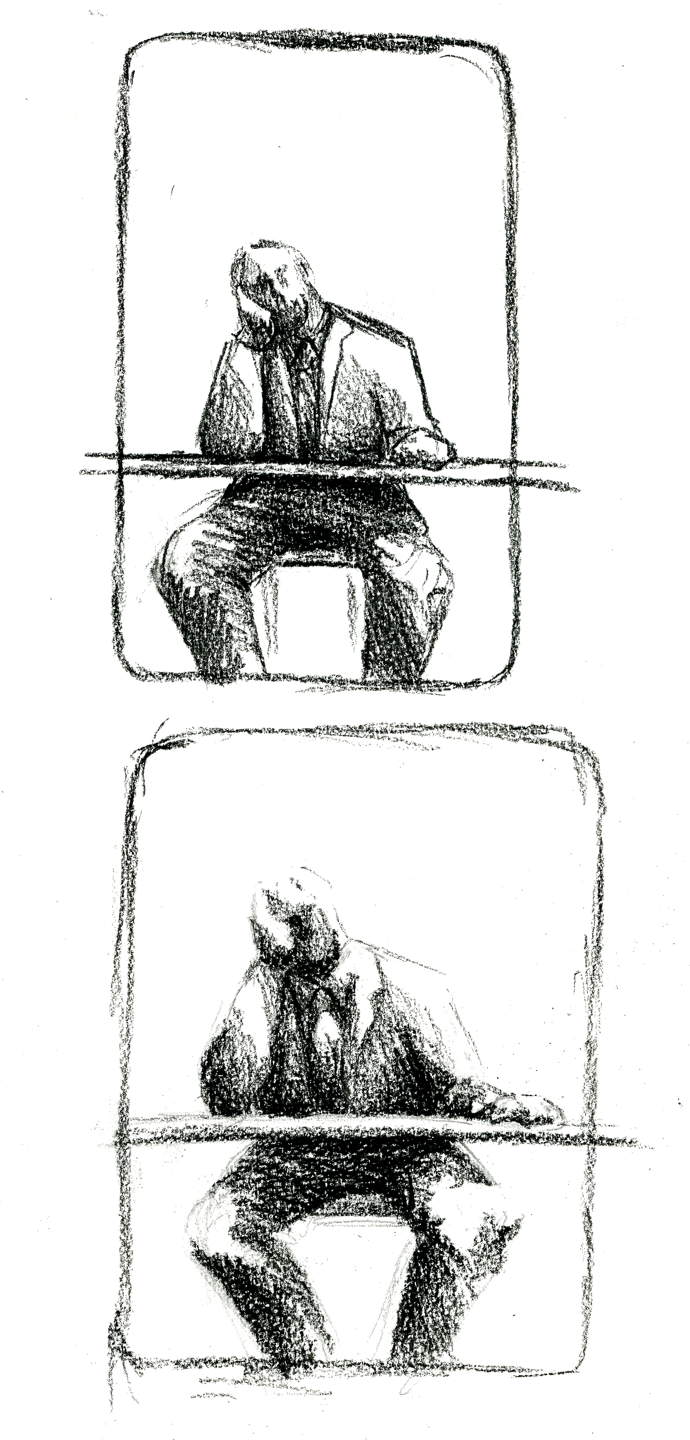
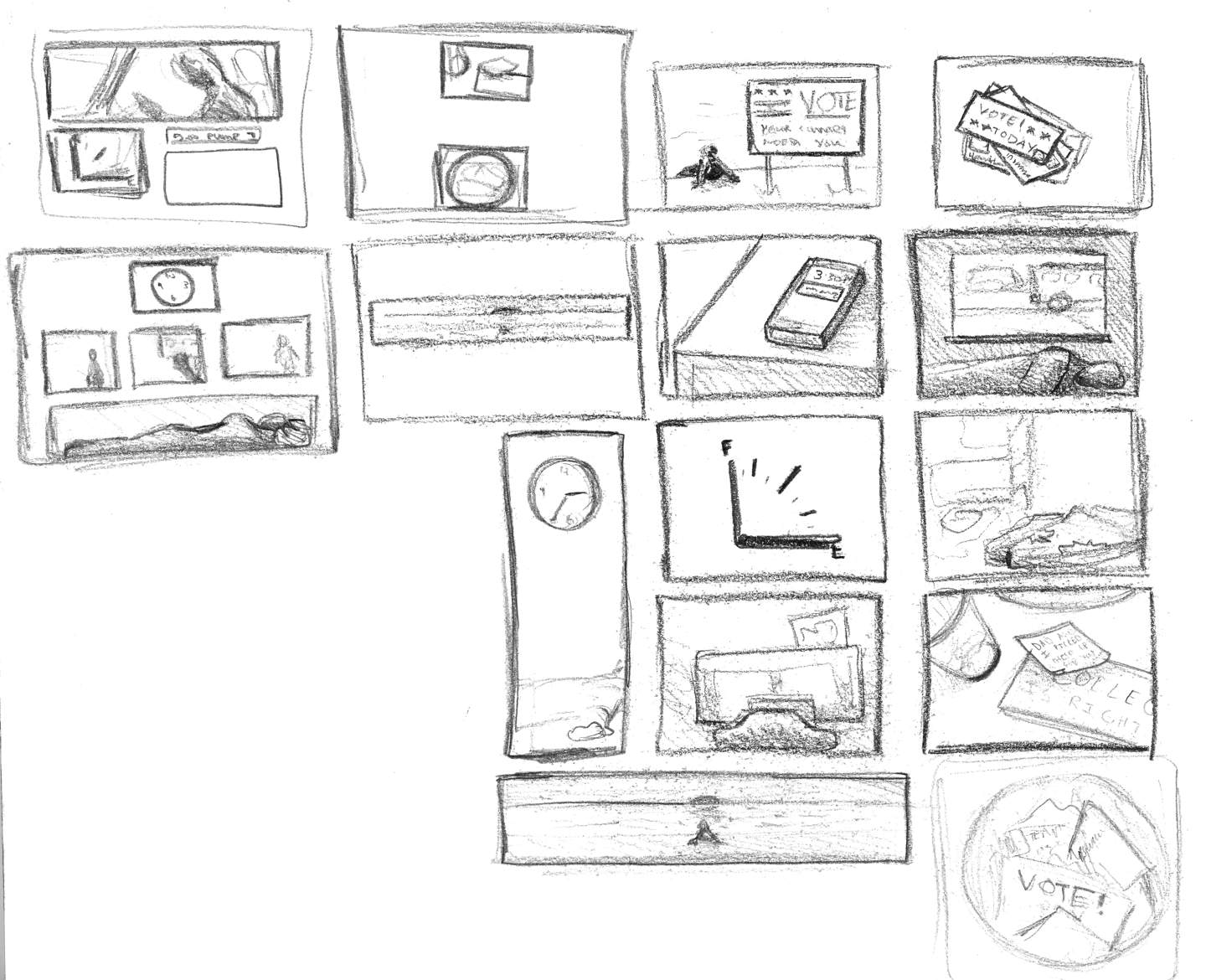
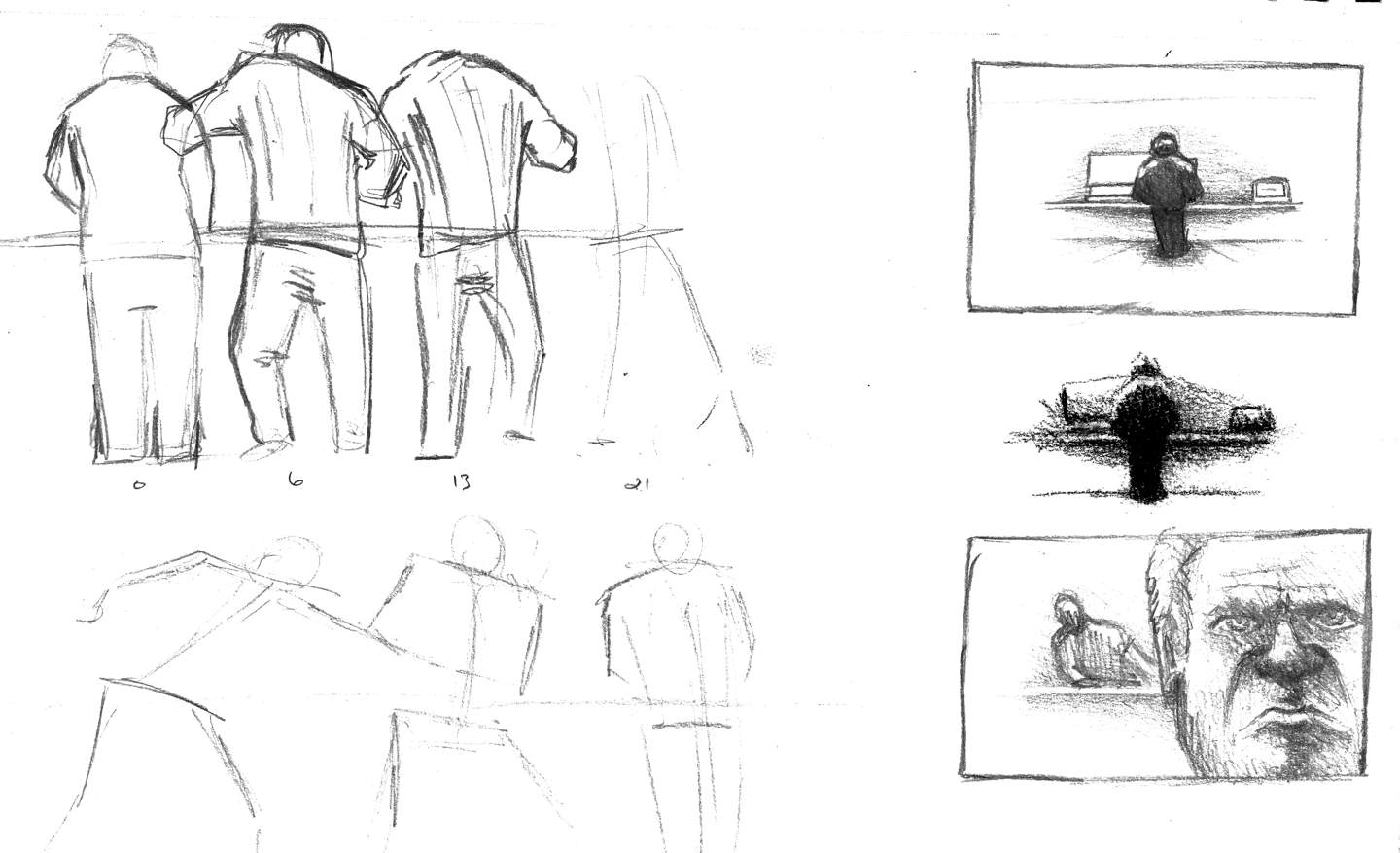
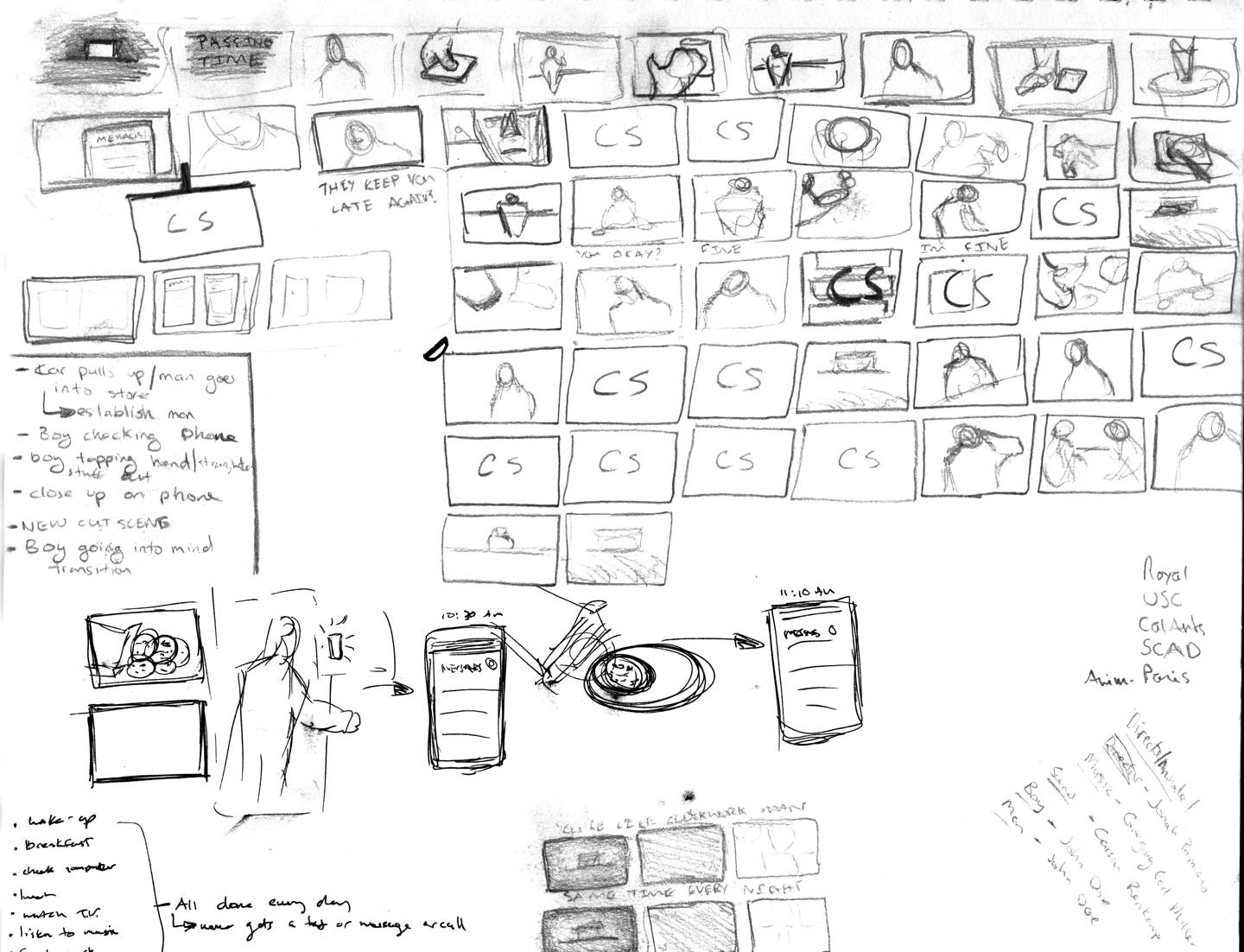
Hand drawn animation is an inherently time consuming method of creation. How did you plan out the story and then execute on that during production to maximise your time?
The production definitely got off to a rocky start. We essentially have 20 weeks to complete our films at SCAD, which is two thirds of our senior year. We have a class at the end of our junior year to plan out the films so that when we arrive for senior year we can jump immediately into production. When I left the concept class I had an entirely different film planned out that had storyboards and an animatic. Over the summer I made the decision to scrap that idea and I began storyboarding IDLE. So, when I arrived for my first day of senior year I was pretty far behind most students. Although I didn’t have an animatic, my vision was clear and my storyboards were pretty exact since I had been working on them all summer. The main hurdle I had to overcome was the execution. At this point I had no idea how I was going to animate it. I knew that I wanted to hand draw the film but my professors warned that I would never finish if I did. Luckily, I had a new professor who saw my ambition and encouraged me to dive into making it with charcoal.
When it came down to production, I just started to animate as soon as I could. Knowing I had so much to get done in not a lot of time was kind of a benefit because it forced me to not spend too much time in any one area. It freed me up to just animate straight through the film with pencil. I didn’t even keep track of frames. I would just animate, shoot it in, and if it felt right I went with it. It became apparent when adding the charcoal that I needed my own individual workspace simply because It was going to be very messy. My professor was able to get me a small corner in the back of my building to put an old animation desk. Having the animation completed before I added any charcoal was definitely a major help because I could spend 6 or 8 hours just adding charcoal.


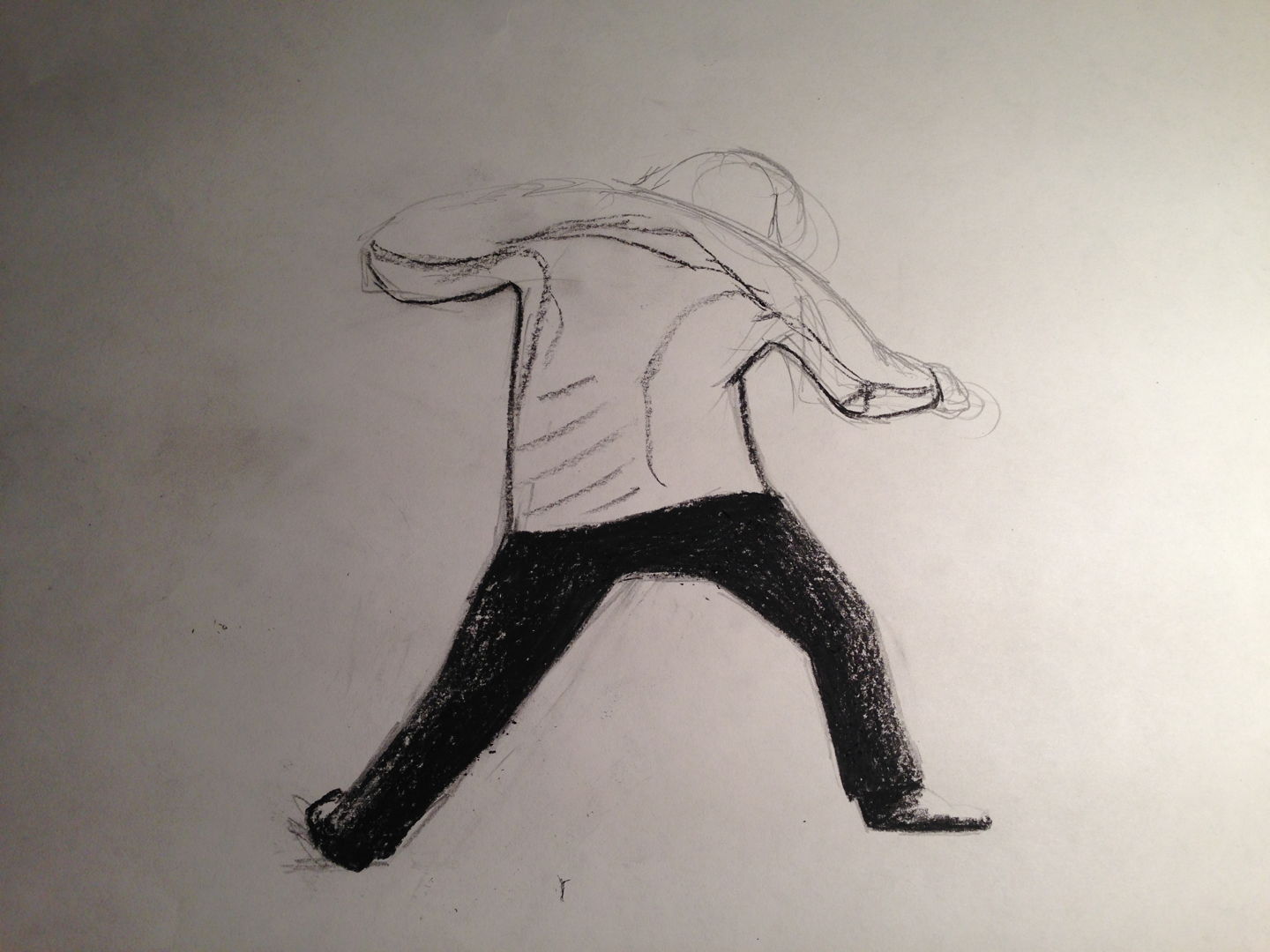


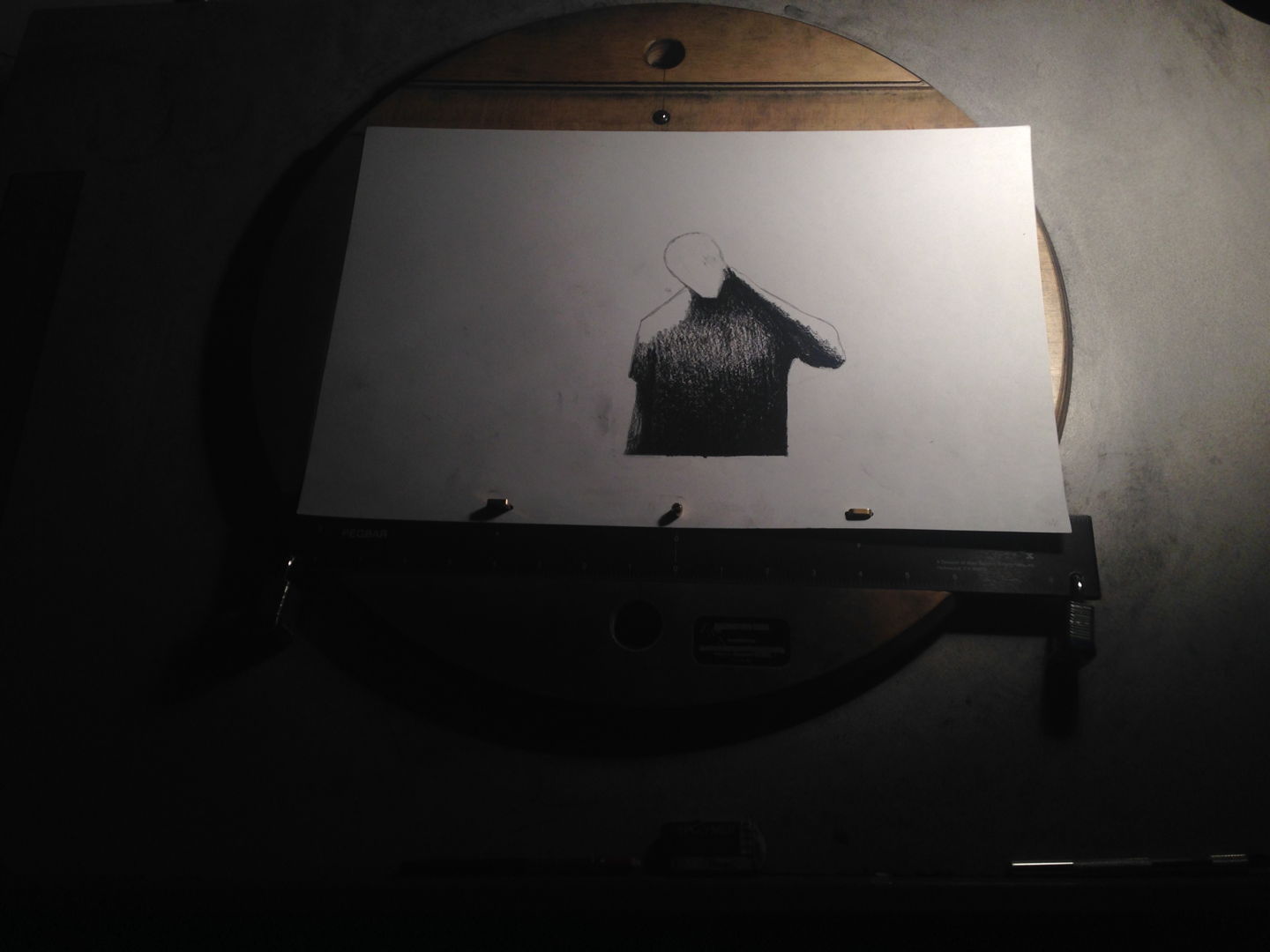



Perhaps the most challenging thing I had to overcome was the script. I had never written a script before – I didn’t realize how hard it was to make a conversation sound believable. I struggled with the script for most of production, to the point where my professor questioned whether I would actually finish it or not. I got input from almost anyone that would listen and I finalized it very late in production and luckily found amazing voice talent to record the dialogue.
I had never written a script before – I didn’t realize how hard it was to make a conversation sound believable.
There’s a fine line to walk to ensure that character appropriate flat emotional delivery doesn’t go so far as to turn the audience off. What approach did you take when directing your voice actors to minimise viewer disengagement?
I mainly tried to get the voice actors in the shoes of these two characters. The conversation had to feel real. If any line felt forced or out of place we would immediately lose the audience. I broke each character down for the actors and tried to familiarize them as much as possible. I didn’t show them any footage from the film; I really wanted them to focus on having the conversation between themselves.
Both the sound design and score are an equally minimal, yet expressive accompaniment to your charcoal drawings. How did you go about building emptiness and isolation into the soundtrack of the film?
My good friend Gregory created the score. He makes devastatingly beautiful music in a similar style to what is in the film, so from the start I knew I wanted to work with him. I sent him early drafts of the animatic as well as notes and he essentially made what is in the film on his first pass. We both knew that the music had to be very atmospheric and open to match the overall feeling of the film. My sound designers and I agreed that the sound should be almost non-existent while in the gas station and then change to being more sculptural during the vignettes. The sounds featured during these moments mirror the inner feelings of the characters. It always returns to the sound of the wind and the grass, which emphasized how alone and lost both characters feel.
Where do you see your work going next?
My eventual goal is to go to graduate school for animation, but until then I’d like to make a few more films and get more involved with the community of independent animators around the world.

